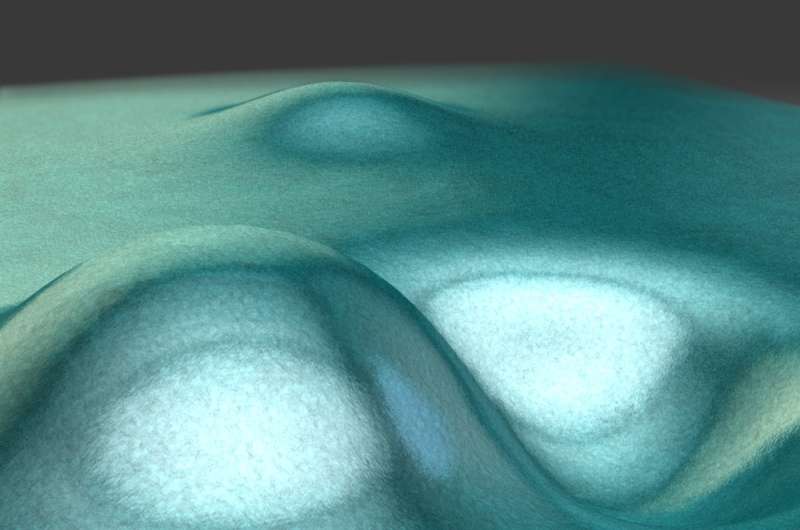Drum beats from a one atom thick graphite membrane

Researchers from the Tata Institute of Fundamental Research, Mumbai, have demonstrated the ability to manipulate the vibrations of a drum of nanometre scale thickness - realizing the world's smallest and most versatile drum. This work has implications in improving the sensitivity of small detectors of mass - very important in detecting the mass of small molecules like viruses. This also opens the doors to probing exciting new aspects of fundamental physics.
The work, recently published in the journal Nature Nanotechnology, made use of graphene, a one-atom thick wonder material, to fabricate drums that have highly tunable mechanical frequencies and coupling between various modes. Coupling between the modes was shown to be controllable which led to the creation of new, hybrid modes and, further, allowed amplification of the vibrations.
The experiment consisted of studying the mechanical vibrational modes, or 'notes', similar to a musical drum. The small size of the drum ( diameter 0.003 mm, or 30 times smaller than the diameter of human hair) gave rise to high vibrational frequencies in the range of 100 Mega Hertz - implying that this drum vibrates 100 million times in one second. The work done by lead author, PhD student John Mathew, in the nanoelectronics group led by Prof. Mandar Deshmukh, showed that the notes of these drums could be controlled by making use of an electrical force that bends, or strains, the drum. The bending of the drum also caused different modes of the drum to interact with each other. This leads to a sloshing of energy between two notes.
"Using this interaction we now show that energy can be transferred between the modes leading to the creation of new 'notes' in the drum", says Prof. Deshmukh. The rate of energy transfer could be precisely controlled by electrical signals that modulate the coupling. The work, in addition, made use of the mechanical mode coupling to manipulate the energy lost to the environment and demonstrated amplification of the vibrational motion, equivalent to an increase in sound from the drum.
At low temperatures, the high mechanical frequencies would allow studies of energy transfer of a quantum mechanical nature between the notes. The coupling between various notes of the drum could also be engineered to work as mechanical logic circuits and lead to improvements in quantum information processing. The ability to amplify the mechanical motion will also help improve the sensitivity of sensors based on nanoscale drums.
More information: John P. Mathew et al, Dynamical strong coupling and parametric amplification of mechanical modes of graphene drums, Nature Nanotechnology (2016). DOI: 10.1038/nnano.2016.94
Journal information: Nature Nanotechnology
Provided by Tata Institute of Fundamental Research




















